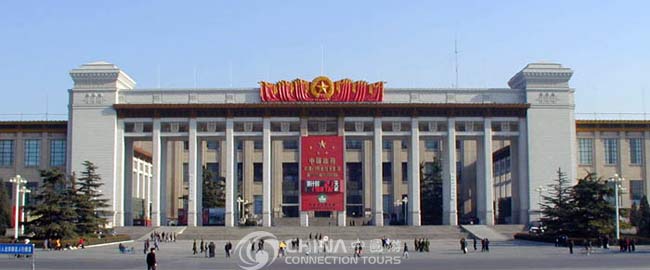
The Museum of Chinese History opened to the public in 1926, when it was known simple as the Museum of History. Despite the 14 years of preparatory work which preceded its paltry collection, which included Han Dynasty pottery and bricks excavated from three tombs at Xinyang, Henan Province; Song Dynasty furniture and pottery found in the Song city of Julu in Hebei Province; as well as several jade seals from the Taiping Heavenly Kingdom (1851-1864).
After 1949, however, the collection expanded rapidly to include over 30,000 pieces. Some of these came from official sources, such as the North China Administration of Cultural Relics, while more than 16,900 pieces came from private collections. Among these are a number of precious items such as a blue glazed lamp of the Six Dynasties period (222-589), Tang stone figurines, and a Ming embroidered silk portrait of the Heavenly Kings (Devarajas).

Exhibitions held in the Museum of Chinese History can be divided into those of a permanent nature, such as the present exhibition of the Comprehensive History of China, which begins with the period of primitive tribes and ends with the May 4th Movement in 1919; and those of a temporary nature, which include local history exhibitions and traveling exhibits from foreign museums. In general, the museum houses a fabulous selection of ancient Chinese relics dating back 5,000 years.

